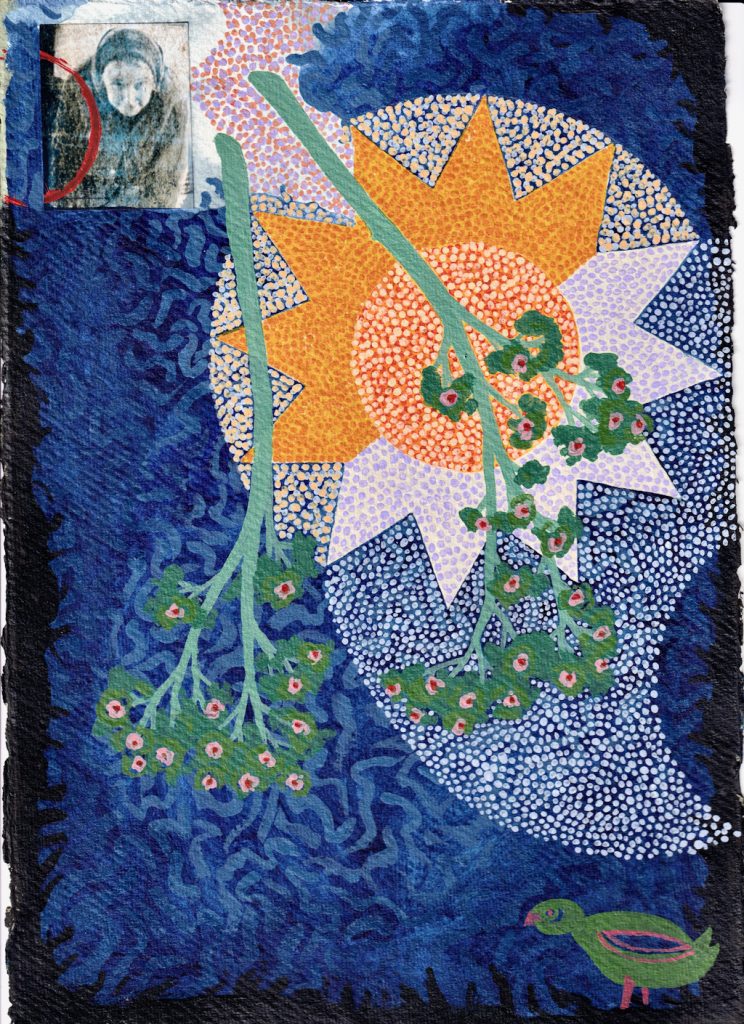
‘How does just being here, asking questions, make a difference’?
UB
Màiri nighean Alasdair Ruaidh (Mary Macleod) lived on Skye for much of her life. We know little about her beyond that she was a nurse in the household of the Macleod chief and started creating her songs of‘vignettes of the material world of the late-seventeenth-century Highlands as markers of her people’s prowess’ fairly late in life. (Information on Màiri in this section is from Colm Ó Baoill (ed) Màiri nighean Alasdair Ruaidh Song-maker of Skye and Berneray Glasgow, Scottish Gaelic Texts Society). However, MacLeod clan history records that a fairy sang a lullaby over a MacLeod heir and that for generations the qualification for any nursemaid to the chiefs was that they could sing what had now become an apotropaic spell, something between a wish and a charm for good fortune.
We also know Màiri was exiled from Skye for a while but not why. It’s been speculated that she displeased her patron by over-praising one of his relatives, composed satirical or obscene songs, used poetic modes that were the preserve of male bards or, given her “croon” Hill iù-an hill eò-an, expressed in song her love for the chief’s children, some of whom subsequently sickened and died. She was forbidden to compose songs at some point, something she ignored. Perhaps her songs were believed to have affected the children’s health, as evoking the evil eye. “Oral tradition” presents Màiri as uncanny. It claims she was banned from singing outdoors and, later, indoors, so sang standing across thresholds, something that:
refers to a specific method of dèanamh na frìthe, a process of divination in which the diviner walks in a circle about the fire reciting a rhyme, goes to the threshold, opens his or her eyes, and then interprets the future according to the first living creatures seen. Màiri nighean Alasdair Ruaidh’s position in tradition is thus emphatically liminal, not just between male and female, but between this world and what was to come.(Domhnall Uilleam Stiùbhart ‘Highland Rogues and the Roots of Highland Romanticism’ see https://www.academia.edu/18538963/_Highland_Rogues_and_the_Roots_of_Highland_Romanticism_)
“Oral tradition” also reports that ‘Màiri directed that she herself should be placed face down in her grave in St Clement’s church in Rondel, Harris, that “the lying mouth should be beneath her”’. A form of burial seen as a community’s judgement on an individual regarded as “immoral” or a “witch”. That judgement was also applied to the bard Mairghread nighean Lachlainn, supposedly buried in Mull face down and under a heap of stones.
Maybe “oral tradition” should have another name? Nuala Ní Dhomhnaill reminds us that in the Gaelic poetic tradition shared between Ireland and Scotland, ‘bardic poets were rigidly mindful of maintaining the status quo of their own position’. Poets like Eibhlín Dubh Ní Chonaill were “disappeared”, just as ‘the mná luibheanna (herb women) and the mná cabhartha (midwives)’ were “disappeared” by ‘physicians and obstetricians’. (Nuala Ní Dhomhnaill (2005) op. cit. pp. 51-52). Perhaps the judgement of “oral tradition” on Màiri was a response to her “feminising” of the formal song tradition through simple, natural rhythms so as to express love for children she cared for?